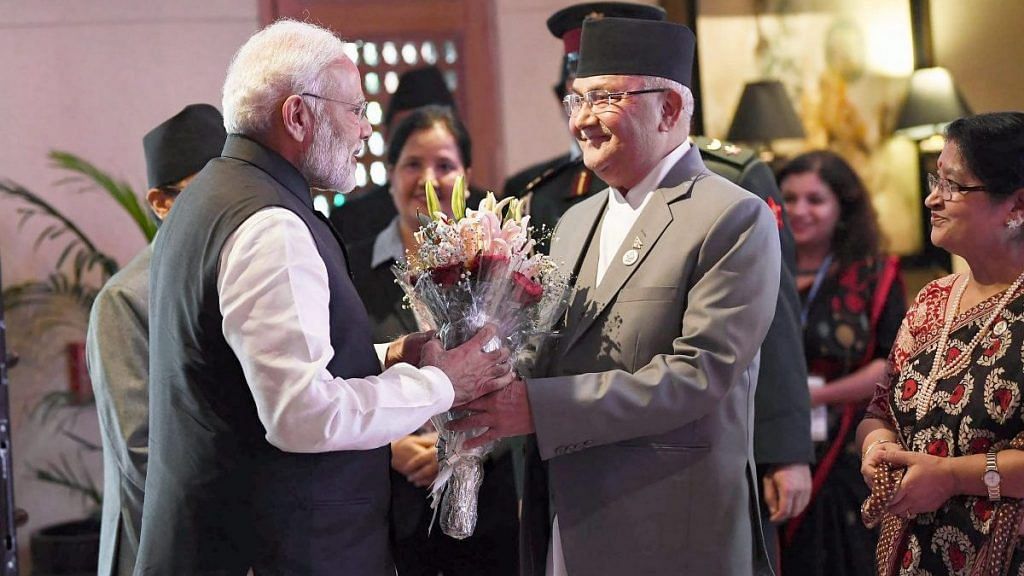Within the Asian theatre, no region is more vital for India than South Asia. India cannot hope to arrive as a great power if it is unable to manage relationships within South Asia.’
– ‘Non-alignment 2.0’, a report by a task force set up to advise on India’s foreign and strategic policy in the twenty-first century.
At a press meet held in Kathmandu on 21 October 1992 by the visiting Indian Prime Minister P.V. Narasimha Rao, a journalist from the Kolkata-based magazine Sunday, Avirook Sen, asked, ‘India is generally perceived as a big brother in the subcontinent. Do you think your visit is trying to change that perception?’ Rao smiled and answered, ‘There is no way that I can change my size. Please understand.’
Though he said it in a light-hearted manner, it clarified the Indian perception. In fact, you can neither change your neighbour nor its shape. But the problem arises when your neighbour never comes out of its ‘big brotherly’ approach, which leads to an unnecessarily high level of interest in your domestic affairs.
Also read: How a wildlife conservation pact between India and Nepal can boost their bilateral ties
Just as the question of why the Maoists sought the backing of a foreign nation in the course of a domestic conflict will continue to be asked, there will also be questions as to why a democratic India encouraged rebels that had raised arms against the democratic system of a neighbouring country. Actually, India finds its ‘national interest’ much more important than democracy or the maintenance of cordial relations with a neighbour, and this leads India to adopt whichever means are necessary.
From sending the army to control Tamil rebels in Sri Lanka, to splitting east Pakistan to establish Bangladesh, from mobilizing its intelligence agency to annex Sikkim, to turning Bhutan into a protectorate—there are several examples of the enforcement of India’s adventurous foreign policy in south Asia. Despite the language used in formal diplomacy, democracy, Constitution-making, or backing any particular individual or party are not India’s priority. The main thing is they do whatever is required to safeguard their interest.
India once backed the Panchayat regime, then encouraged the people’s movement against it. Backing Congress’s armed revolt against the party-less Panchayat system, and backing the Maoists’ insurgency against the multiparty system, were guided alike by the same Indian strategy. On one hand, they sent mixed signals to King Gyanendra, and on the other, they helped forge an alliance between the Maoists and the seven parties to overthrow the monarchy.
At first glance, India’s policy toward Nepal appears incoherent. They are seen backing one or the other forces or individuals at different times. It is said there are no permanent foes or friends in international relations. The only thing permanent is national interest. Delhi seems to be following this approach by the book.
Besides, there is no single India. There are many smaller Indias, whose understanding about Nepal are different. The external affairs and home ministries, IB and RAW, the army and the defence ministry, former royals and business houses, provinces bordering Nepal, the PMO and the national security advisor, all have different stakes in Nepal. But at the top is India’s ‘national interest’, which generally brings all of them together.
So, despite their proximity with different parties and leaders at different times, these actors have not shifted from their main goal. And that goal is not letting smaller neighbours like Nepal drift away from India’s sphere of influence. Nepal has been at the receiving end of this attitude for a long time.
Also read: Xi Jinping’s tight embrace of Nepal is bad news for Modi’s Neighbourhood First policy
Although it was never directly colonized, Nepal fell under the influence of British India after the Sugauli Treaty of 1816. After 1947, India replaced the departing British in that role. India was directly or indirectly linked with all of the important political events of Nepal after 1950. Certainly, the political movements of 1950–51, which ended the Rana regime, the people’s movement of 1990 which ended the Panchayat regime, and the movement of 2006 that ended the royal regime of King Gyanendra, were the result of Nepali consciousness. But Delhi’s direct or indirect role was also a factor in all of these changes.
However, the changes brought about by these movements have not been durable. Each time, the blame was placed on the political parties, their leaders, and the Constitution at that time. Despite changing Constitution five times in the past sixty years, Nepal did not achieve stability. One of the main reasons was that after every change, Delhi tried to exact its pound of flesh, and, sooner or later, it was construed as Indian interference. Consequently, this resulted in growing internal contradictions, and ultimately dealt a setback to the achievement of the previous movement itself. Actually, Nepal was never able to proceed independently. It was not allowed to.
Neither did the Nepali leaders make honest efforts to abandon the tendency of dependence. Whoever made such efforts found themselves kicked out, under this or that pretext, and was ‘black-listed’. Therefore, the Nepali goals of peace, stability and prosperity were never achieved. The country has been trapped in a series of unending political transitions since 1950.
